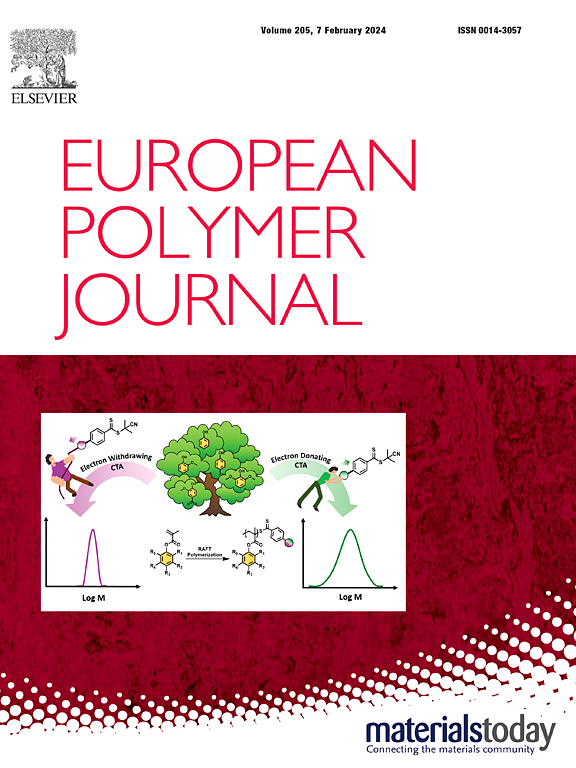pH-induced in suit aggregation of Cu2-xSe-POED with extended tumor retention for enhanced chemodynamic /photothermal therapy
IF 5.8
2区 化学
Q1 POLYMER SCIENCE
引用次数: 0
Abstract
Various functional nanoparticle platforms have been used as alternative approaches for tumor treatment such as chemodynamic (CDT) and photothermal therapies (PTT). However, the tumor microenvironment with dense extracellular matrices and increased interstitial fluid pressure is adverse for enrichment and retention of nanoparticles. Herein, a pH-sensitive Cu2-xSe-POED nanoparticles (CS-POED NPs) platform is developed to promote the hydrophilic-hydrophobic transition, that contribute to the formation of CS aggregates with large size in tumor tissue. pH-sensitivity of CS-POED NPs results from modifying the surface with pH-sensitive poly(ethylene glycol)-ortho ester-dihydrolipoic acid (POED). The accumulation of CS-POED NPs led to a Fenton-like reaction, generating considerable amounts of ROS to boost the effectiveness of CDT. Meanwhile, the agglomeration CS-POED NPs prolongs their tumor retention resulting in enhanced PTT. According to in vitro and in vivo studies, CS-POED NPs substantially kills tumor cells with laser irradiation, leading to a significant regression of the tumors. In addition, CS-POED NPs have exhibited a favorable biosafety profile based on their in vitro and in vivo evaluations. The novel pH-sensitive CS-POED nanoparticles platform certainly offers a new strategy for enhanced chemodynamic/photothermal tumor therapy.

求助全文
约1分钟内获得全文
求助全文
来源期刊

European Polymer Journal
化学-高分子科学
CiteScore
9.90
自引率
10.00%
发文量
691
审稿时长
23 days
期刊介绍:
European Polymer Journal is dedicated to publishing work on fundamental and applied polymer chemistry and macromolecular materials. The journal covers all aspects of polymer synthesis, including polymerization mechanisms and chemical functional transformations, with a focus on novel polymers and the relationships between molecular structure and polymer properties. In addition, we welcome submissions on bio-based or renewable polymers, stimuli-responsive systems and polymer bio-hybrids. European Polymer Journal also publishes research on the biomedical application of polymers, including drug delivery and regenerative medicine. The main scope is covered but not limited to the following core research areas:
Polymer synthesis and functionalization
• Novel synthetic routes for polymerization, functional modification, controlled/living polymerization and precision polymers.
Stimuli-responsive polymers
• Including shape memory and self-healing polymers.
Supramolecular polymers and self-assembly
• Molecular recognition and higher order polymer structures.
Renewable and sustainable polymers
• Bio-based, biodegradable and anti-microbial polymers and polymeric bio-nanocomposites.
Polymers at interfaces and surfaces
• Chemistry and engineering of surfaces with biological relevance, including patterning, antifouling polymers and polymers for membrane applications.
Biomedical applications and nanomedicine
• Polymers for regenerative medicine, drug delivery molecular release and gene therapy
The scope of European Polymer Journal no longer includes Polymer Physics.
 求助内容:
求助内容: 应助结果提醒方式:
应助结果提醒方式:


